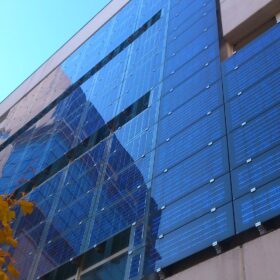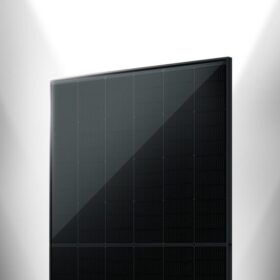German home battery sales collapse but larger systems on the rise
German energy storage sales are shrinking, especially home systems, but commercial and industrial (C&I) and utility-scale numbers are rising and the Federal Association of Energy Storage Systems (BVES) wants faster permitting and better regulation.
Atmoce launches ‘extra’ low-voltage batteries for residential PV
The new batteries have a nominal DC voltage of 26.5 V and a maximum DC voltage of 28.8 V, with the operating AC voltage range being 176-276 V. Their nominal battery capacity is 280 Ah and the rated battery energy is 7 kWh.
Tunisia greenlights 500 MW of solar
The Tunisian government has granted licenses to four PV projects with a combined capacity of 500 MW. The selected developers are Qair International, Voltalia, Toyota Tsusho and Scatec.
Zendure launches new residential batteries
The US-based company unveiled a battery designed for balcony applications and a storage system for rooftop PV systems. Both products are AI-powered.
Key takeaways from RE+ México 2025
RE+ México 2025 drew more than 8,500 attendees to Expo Guadalajara, with optimism driven by pending energy reforms and a new storage ruling in the country.
European PPA prices down in February amid lower deal volumes, says Pexapark
European power purchase agreement (PPA) prices fell in February amid sliding energy commodity prices, but deal flow held steady, says Swiss energy consultancy Pexapark, noting that a “landmark” 40-year, 15 MW solar PPA was signed in Wales.
CRRC releases 5 MWh liquid-cooled energy storage system
The world’s largest rolling stock manufacturer says that its new container storage system uses LFP cells with a 3.2 V/314 Ah capacity. The system also features a DC voltage range of 1,081.6 V to 1,497.6 V.
Technical guidebook for building-integrated photovoltaics
As the global transition toward sustainable energy intensifies, building-integrated photovoltaics (BIPV) has emerged as a critical innovation in merging renewable energy with architectural design. The recently published guidebook “Building-Integrated Photovoltaics: A Technical Guidebook,” edited by IEA PVPS Task 15 experts Nuria Martín Chivelet, Costa Kapsis, and Francesco Frontini, offers a comprehensive resource for architects, engineers, and urban planners looking to integrate BIPV into the built environment. This article explores the book’s key insights, including applications, challenges, and future pathways.
The Hydrogen Stream: Chile selects electrolyzer companies for local assembly
Chile’s economic development agency Corfo has selected three companies – two Chinese and one Spanish – to build electrolyzer production facilities in the country. The projects, set to begin operations by mid-2026, will assemble alkaline and proton exchange membrane (PEM) electrolyzers ranging from 50 kW to 5 MW.
Chinese PV Industry Brief: Trina Solar announces 800 W tandem solar module
Trina Solar’s National Key Laboratory of PV Science and Technology says that its new perovskite-polysilicon tandem module has achieved 808 W of peak power output in TÜV SÜD testing.










